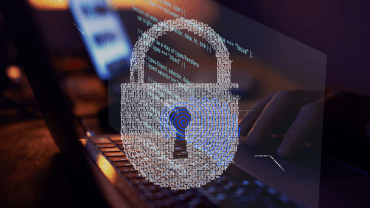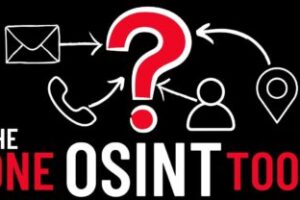Protecting Software from Tampering: Expert Advice and Adherence to the Rules
Software tamper protection is crucial in today’s digital landscape, where security threats are ever-evolving and increasingly sophisticated. This paper delves into expert advice on protecting software from tampering, outlines key compliance considerations, and provides practical guidelines to ensure robust defense mechanisms. Additionally, we will incorporate examples and statistical data through tables and lists to emphasize the importance of effective tamper protection strategies.
Understanding Software Tamper Protection
Software tampering involves unauthorized modification of software code, often resulting in security breaches, data theft, or compromised functionality. The consequences can be dire, ranging from financial losses to reputational damage. Therefore, it is essential to implement robust tamper protection mechanisms to safeguard software integrity.
Key Tamper Protection Techniques
Code Obfuscation
Code obfuscation is a technique used to make the source code of a program difficult to understand for anyone attempting to reverse-engineer it. By transforming the code into a format that is hard to read while preserving its functionality, obfuscation helps deter tampering attempts.
Benefits of Code Obfuscation
| Benefit | Description |
| Increased Security | Makes it harder for attackers to understand and modify code |
| Protection of Intellectual Property | Safeguards proprietary algorithms and business logic |
| Reduced Risk of Reverse Engineering | Minimizes the chances of code being duplicated or exploited |
Integrity Checking
Integrity checking involves verifying the integrity of software at runtime to detect any unauthorized modifications. This can be achieved using checksums, cryptographic hashes, or digital signatures.
Common Integrity Checking Methods
| Method | Description |
| Checksums | Simple method using a mathematical function |
| Cryptographic Hashes | More secure, uses algorithms like SHA-256 |
| Digital Signatures | Combines hashing with encryption for enhanced security |
Runtime Application Self-Protection (RASP)
RASP is a security technology that integrates with an application to provide real-time monitoring and protection. It helps detect and prevent tampering attempts by monitoring the application’s behavior and responding to potential threats.
Features of RASP
| Feature | Description |
| Real-Time Monitoring | Continuously monitors application behavior |
| Automated Response | Takes immediate action to mitigate detected threats |
| Detailed Logging | Provides logs for forensic analysis and compliance auditing |
Expert Recommendations
Implement Multi-Layered Security
Experts recommend using a combination of tamper protection techniques to create a multi-layered defense. This approach ensures that even if one layer is compromised, additional layers provide continued protection.
Regularly Update and Patch Software
Keeping software up-to-date with the latest patches and updates is essential to protect against known vulnerabilities. Regular updates also enhance the effectiveness of tamper protection mechanisms.
Conduct Regular Security Audits
Regular security audits help identify potential weaknesses in tamper protection strategies. By conducting thorough assessments, organizations can proactively address vulnerabilities and improve their security posture.
Compliance Considerations
Adhering to regulatory standards and industry best practices is crucial for effective software tamper protection. Compliance not only ensures legal and ethical responsibility but also enhances the overall security framework.
Key Regulatory Standards
- General Data Protection Regulation (GDPR): Emphasizes the protection of personal data, requiring robust security measures.
- Payment Card Industry Data Security Standard (PCI DSS): Mandates strict security protocols for organizations handling payment card information.
- Health Insurance Portability and Accountability Act (HIPAA): Requires healthcare organizations to implement safeguards to protect patient information.
Practical Guidelines for Tamper Protection
Conduct Threat Modeling
Threat modeling helps identify potential threats and vulnerabilities specific to your software. By understanding the attack vectors, you can design targeted tamper protection strategies.
Use Secure Coding Practices
Adopting secure coding practices reduces the risk of introducing vulnerabilities during the software development process. This includes input validation, error handling, and secure data storage.
Implement Access Controls
Restricting access to critical components of your software minimizes the risk of unauthorized modifications. Use role-based access controls (RBAC) to ensure that only authorized personnel have access to sensitive areas.
Monitor and Respond to Security Events
Implement a robust monitoring system to detect and respond to security events in real-time. This includes setting up alerts for suspicious activities and having an incident response plan in place.
Conclusion
Protecting software from tampering is a critical aspect of maintaining its integrity, security, and reliability. By following expert advice, implementing multi-layered security measures, and adhering to compliance standards, organizations can effectively safeguard their software against tampering attempts. Additionally, regular security audits and continuous monitoring are essential to ensure that tamper protection mechanisms remain effective against evolving threats.
FAQ
What is software tampering?
Software tampering involves unauthorized modification of software code, often resulting in security breaches, data theft, or compromised functionality.
How can I protect my software from tampering?
Implementing a combination of tamper protection techniques such as code obfuscation, integrity checking, and Runtime Application Self-Protection (RASP) can help protect your software from tampering.
Why is compliance important for tamper protection?
Compliance ensures adherence to regulatory standards and industry best practices, enhancing the overall security framework and legal responsibility.
Where can I find reliable IT asset management software?
For comprehensive IT asset management software, consider visiting alloysoftware.com/it-asset-management-software. Their solutions offer robust features to manage and secure your IT assets effectively.
In conclusion, safeguarding software from tampering is a multifaceted challenge that requires a strategic approach, combining expert advice, practical guidelines, and adherence to compliance standards. By staying vigilant and proactive, organizations can ensure the integrity and security of their software in the face of evolving threats.





